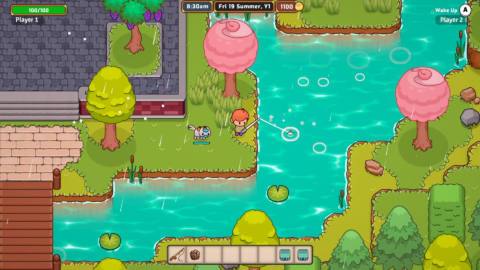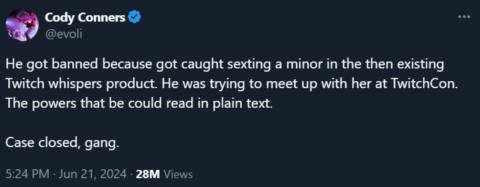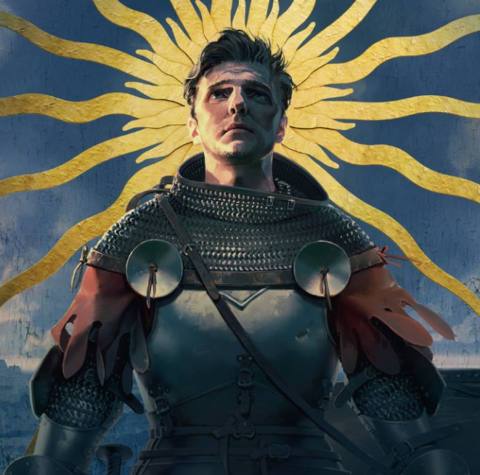I hit up my Discord group with guides maestro Sean and former associate editor Tyler C at 9:30pm, suggesting that we kill some monsters together in Path of Exile 2. I have an ulterior motive. What I really mean is: “Dear god, please help me, a giant mutant wolf keeps murdering my Monk”. I am having a very bad time. But I am also having a very good time. Because I am a complete sicko.
The original Path of Exile is my all-time favourite ARPG, which I’ve been playing off and on for over a decade. The genre, meanwhile, is one I’ve dedicated an absurd number of hours to, ever since Diablo started taking over lives way back in 1997. My fingers might not be as fast as they used to be, but this is all to say that I’m not that bad at ARPGs. With PoE2, though, I’ve had a real fight on my hands.

Ever since Dark Souls—and then Bloodborne, Sekiro and Elden Ring—became a phenomenon, it’s become impossible to avoid half-arsed comparisons. We’ve reached the point where any action-RPG featuring a dodge roll now invites them. It even happened with Dragon Age: The Veilguard, an RPG that could not be further away from the kind of deep, skill-based, and frequently obtuse stylings of a FromSoft game.
Well, Path of Exile 2 has a dodge roll, and it has been giving me some major Dark Souls vibes. I am incredibly sorry.
The dodge roll, in this case, is not really the point of comparison, though. PoE2 does not, for instance, limit your mid-battle acrobatics to a stamina bar. You can roll and roll and roll until your hands get tired. But in giving players so much more mobility than in the original game, Grinding Gear Games has been free to make its horde of twisted monstrosities, and the nightmarish bosses who command them, much deadlier.
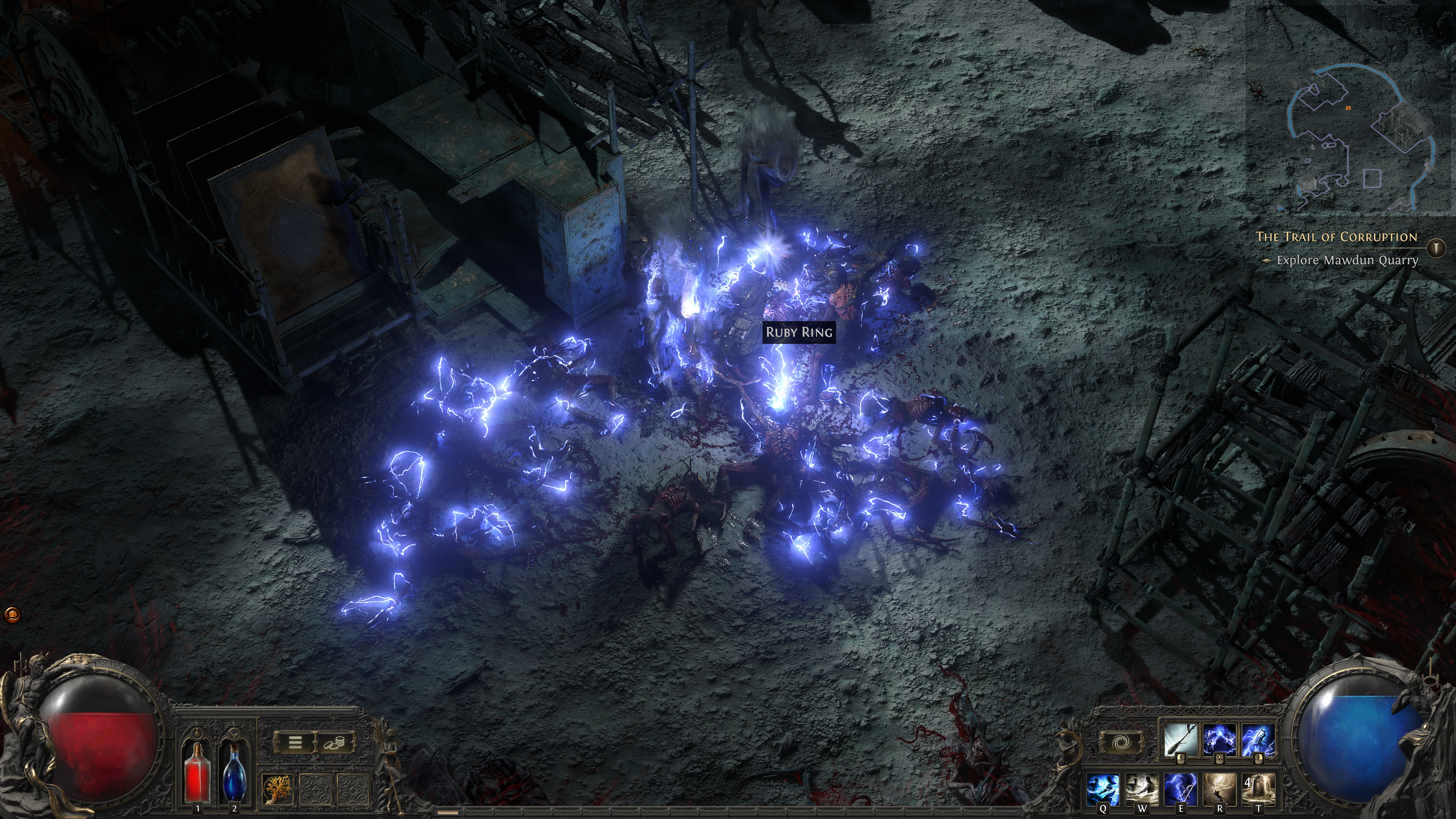
Let’s not forget, Diablo 4 also lets you roll out of danger—albeit in a much more limited fashion—and it’s not had the same impact on the fights. Death in the world of Sanctuary is rarely on my mind. In Path of Exile 2’s Wraeclast, though? Well, it’s all I can think about.
Manor lords
Before I even reached the first act’s main villain, I was already getting my arse handed to me. Outside his manor, I must have died 10 times to basic trash—trapped in a scrum of monsters while one of them spat fire at me, burning me to death in seconds; or forced into a corner, where corrupted pools leeched my life. Nearly every foe has a potentially lethal trick up its sleeve, and it’s rare that you’ll be facing just one type at any given time.
Approaching each area, then, I found myself going into the same headspace as I was in the summer while chipping away at Shadow of the Erdtree: assessing what the biggest threats were, what my most notable weaknesses were, and finding ways to shore them up before going in again.
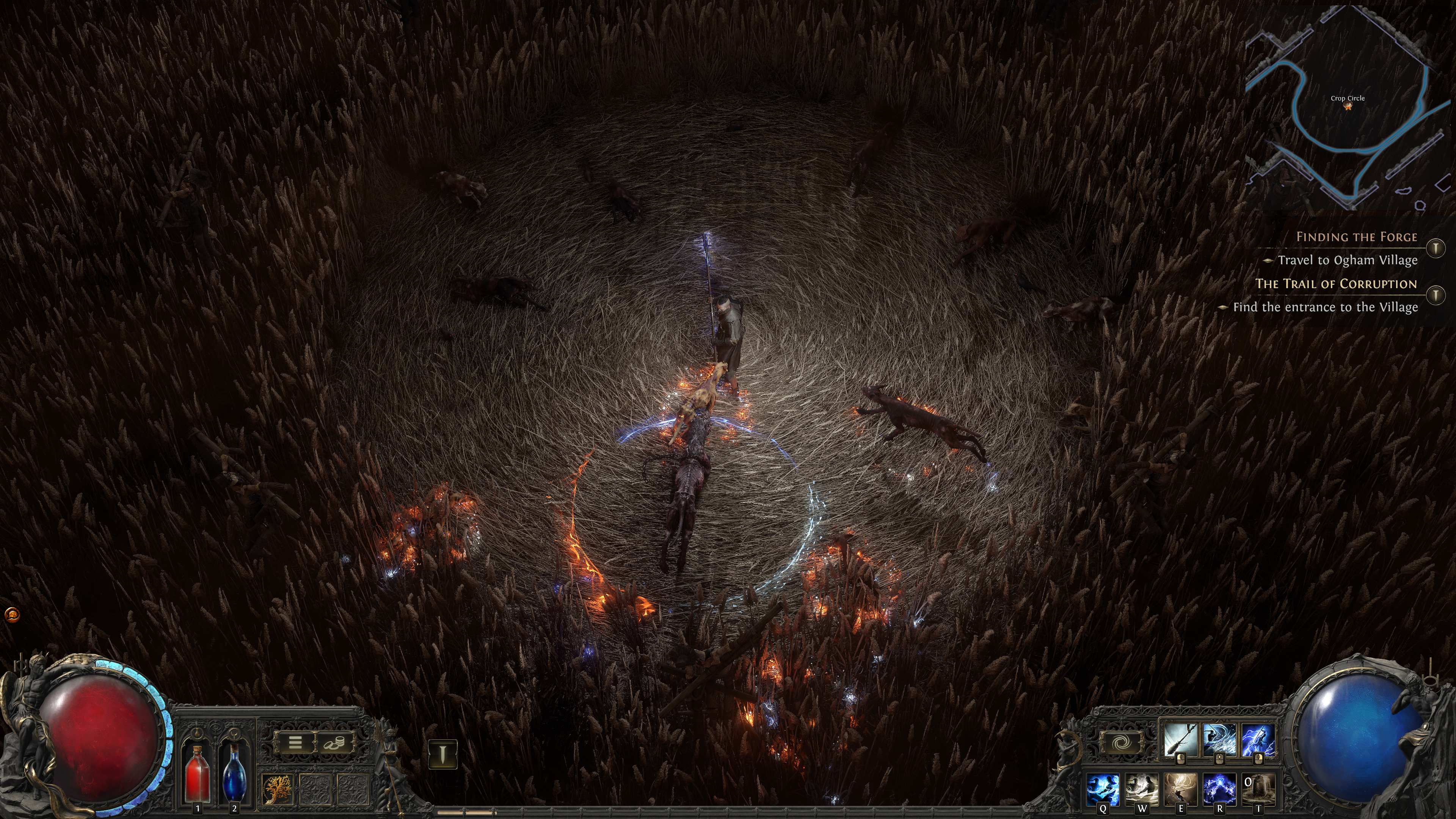
When I realised that too many of my deaths were happening when I got surrounded, I put a skill into my loadout that made my Monk leap up into the sky and then slam the ground with his staff—not to help me kill, but to help me escape the scrum when my dodge roll was useless. That it also helped me stun enemies, which I could then follow up with another Monk attack that adds a projectile to all future attacks (for a limited time), was a nice bonus, granted.
I couldn’t just watch something on Netflix while hammering away at it—and that’s definitely not true of Diablo 4 or PoE1.
This sort of prep work feels even more essential when tackling bosses, who boast all sorts of nasty tricks and surprise phases. They all feel so much more monumental than they were in the first game. One of the first bosses, for instance, is a giant underground worm who dives back into the dirt and then pops up again to do a ton of damage, summons minions, spits out poison and can lash out at you with its tail even when its head is on the other side of the arena—the nasty appendage erupting out of the ground for a sneak attack.
While that fight didn’t give me too much trouble, it did go on for a while, and a lot of these boss battles are tests in endurance as well as skill. But what stood out about it even more, even though I only died once, was that it felt undeniably creative. There was a lot going on, a whole bunch of patterns to memorise, and the end result has stuck in my mind. It also demanded focus: I couldn’t just watch something on Netflix while hammering away at it—and that’s definitely not true of Diablo 4 or PoE1.
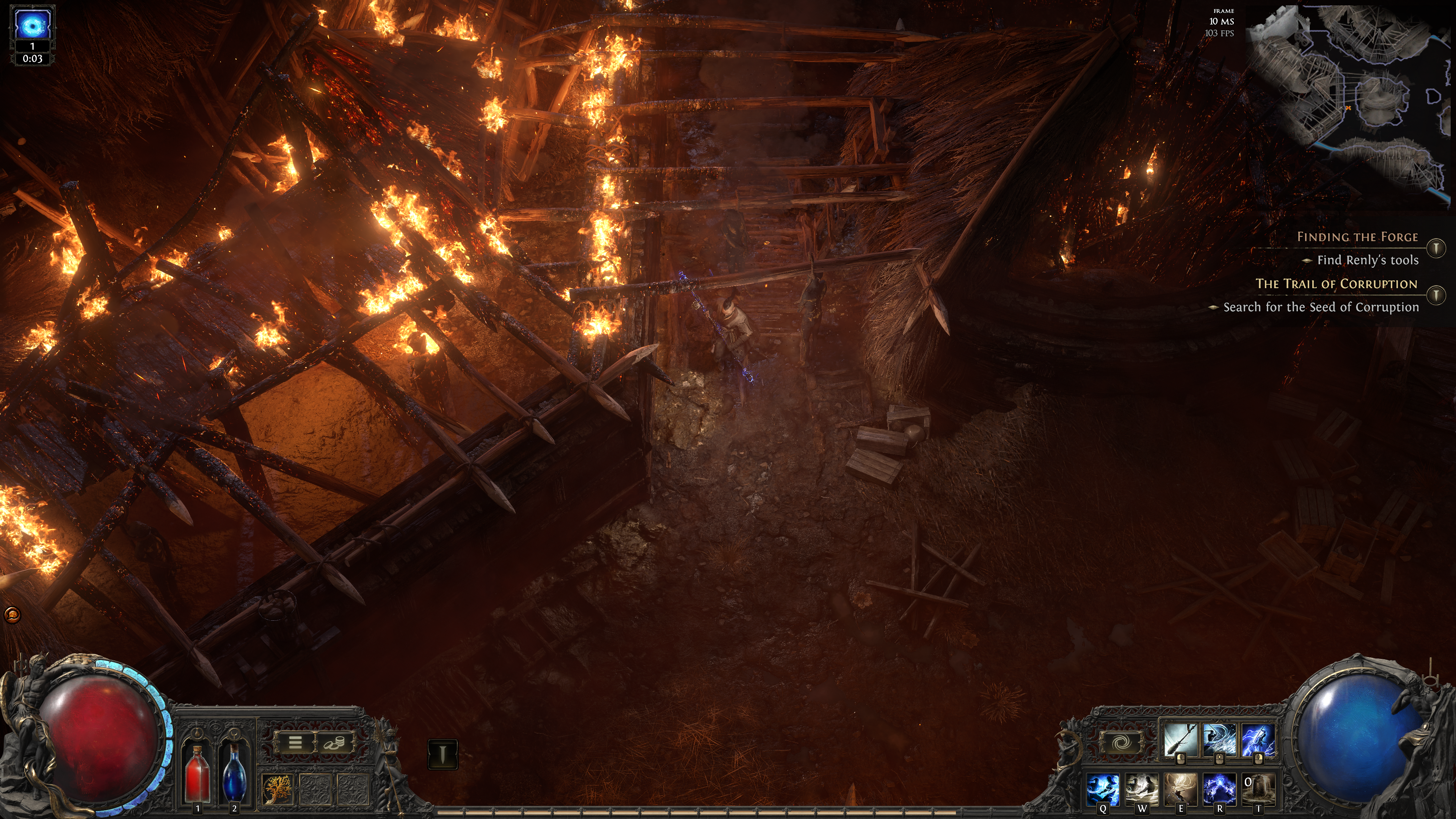
One place PoE has always reminded me of FromSoft’s oeuvre is in its flexibility—indeed, this is somewhere it really has the likes of Dark Souls and Elden Ring beat. The free-form progression systems, where gems give you active skills and the passive skill tree gives you all sorts of build-changing bonuses, have always allowed you to develop incredible killing machines.
But it’s even more true this time around, since you’re no longer picking up specific gems and socketing them into your gear; instead you’re finding uncut gems, where you can choose what skills to unlock. The passive skill tree, meanwhile, feels even more flexible, with dramatically different nodes now very close together, letting you go off in whatever direction you want to boldly experiment.
Second life
The ease with which you can respec is also a significant boon. From very early on, you just need to drop some in-game gold, and you can go back one passive node at a time. It can get quite pricey, and the higher level you are, the more each node costs, but otherwise there are no other restrictions. This is a game where you are absolutely encouraged to experiment, where overhauling your build will just be a regular part of playing, much as it was in Elden Ring.
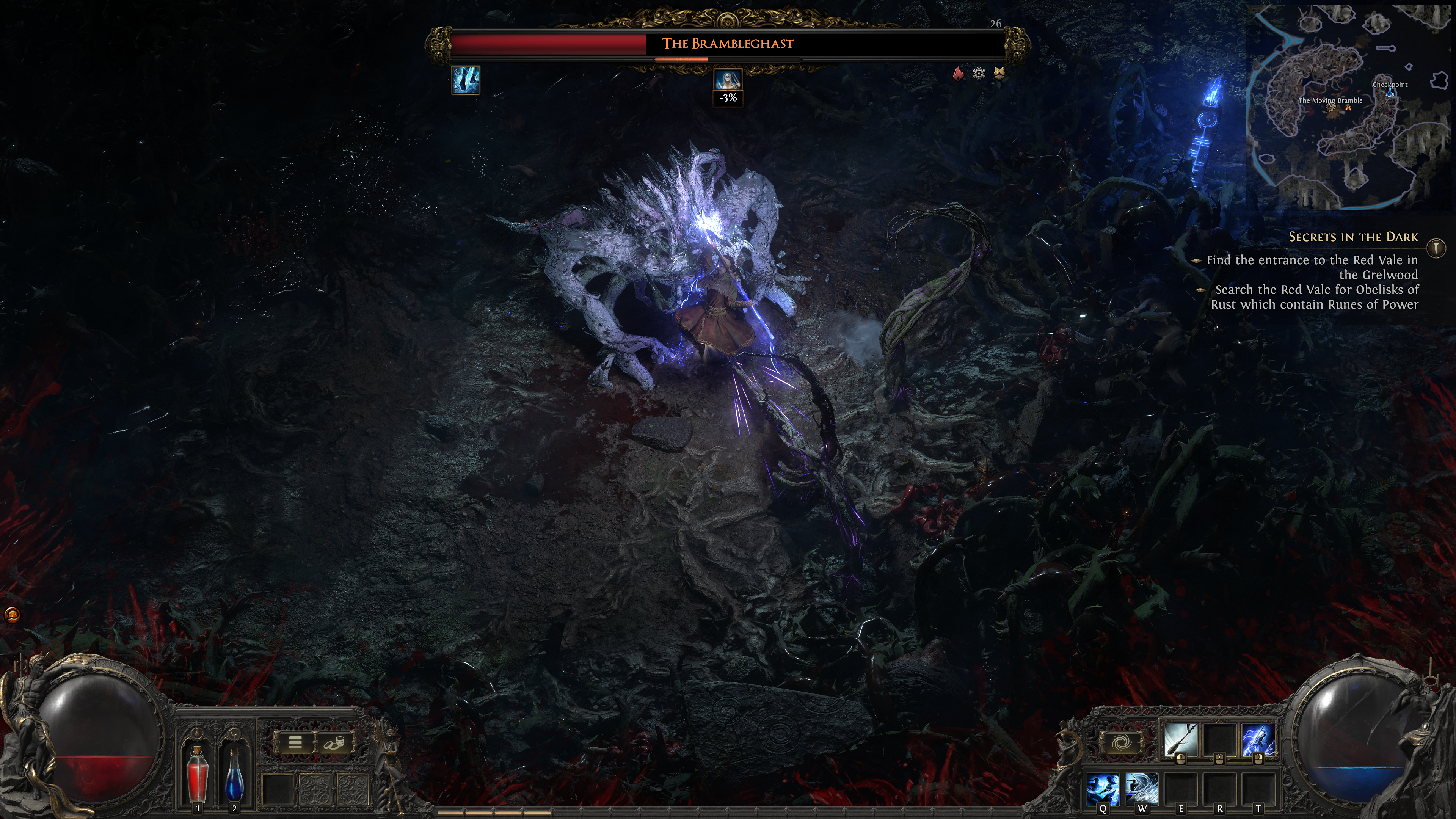
But for all these specific comparisons, I think what’s really reminded me of my time with FromSoft’s games is something broader and less tangible: the feeling I get after I’ve been unceremoniously murdered, or when something finally clicks and I start to become a God of Death. It’s genuinely invigorating. I’m being challenged to engage with this complicated, lethal game and figure out solutions to its killer combat puzzles. And I’m excited to learn. I cannot wait to see what builds other people come up with—and to pinch them, of course.
I’ve really been getting into my groove now, though. After Sean and I took down the first act’s boss together (thanks, buddy!) I got a new staff that perfectly complemented my build, as well as a new passive skill that really tied everything together. The change has been dramatic.
I’ve been focusing primarily on lightning, with active skills drawn from the Monk’s skills (or I should really say staff skills, since any class can use any skill gems, though there are a variety of prerequisites), though I’ve been putting a little spice on it via the Sorceress’s recommended elemental powers. Now I’m clearing the screen in one go, constantly. I feel incredibly overpowered. Right up until the point where I feel incredibly frail. The difference between victory and defeat is measured in milliseconds. See, to get the power I’ve been craving, I’ve not really invested much in evasion, the stat that makes enemies miss you when they attack. So I go down hard and fast. I’m your classic glass cannon.
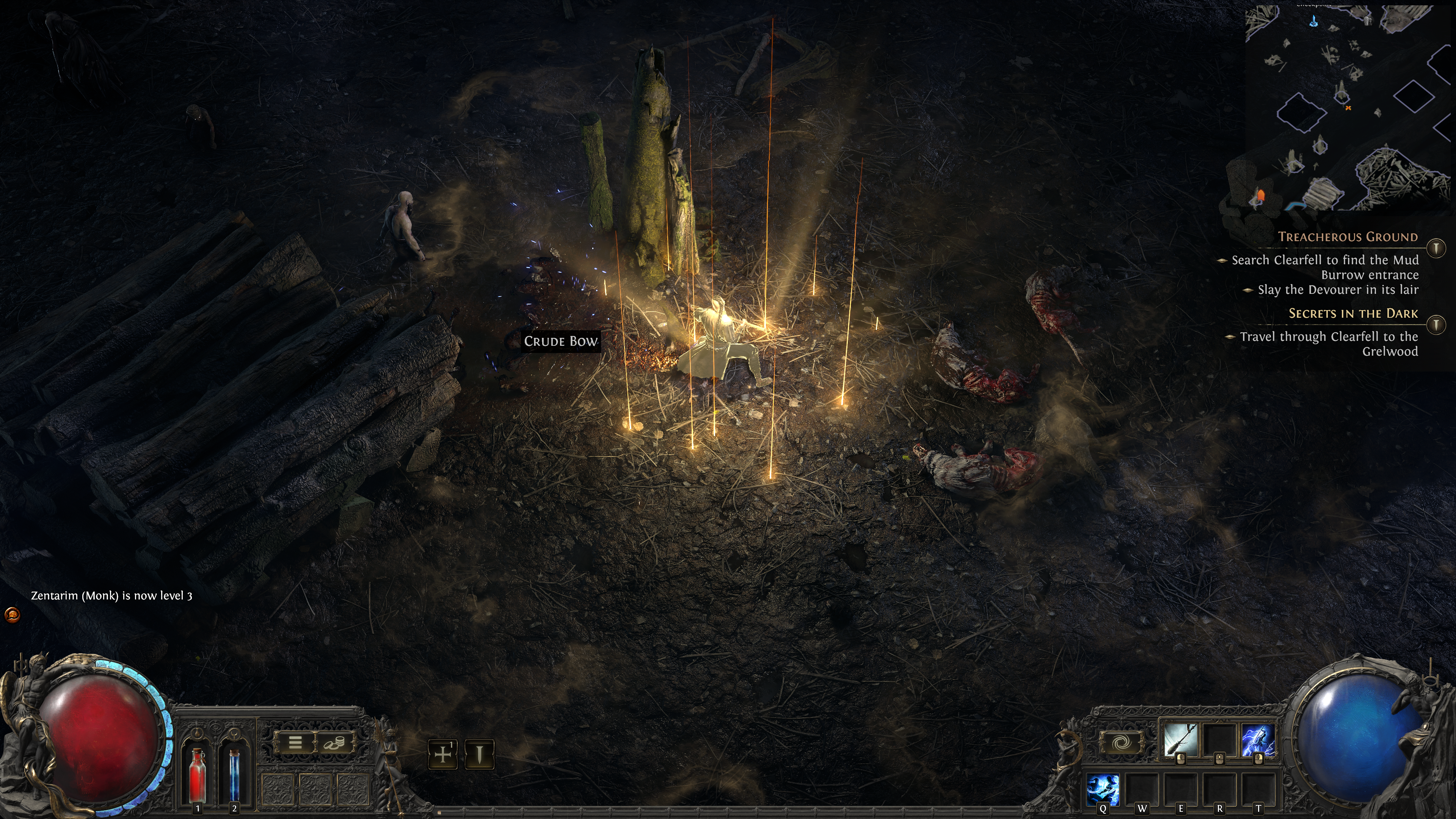
While I’ve been discussing my many deaths, the absence of the word “difficulty” has not been accidental. You could describe Path of Exile 2 as a hard game, but really it’s what you make of it. I know Sean’s been having a much breezier time of it, and part of the reason might be his Mercenary build—not even necessarily the build, really, but the simple fact that ranged classes aren’t as vulnerable to the monster moshpits that keep killing me dead. This is not to say that melee builds can’t work brilliantly, or that ranged builds don’t have their own challenges to deal with. They’re just different, and when you get up close and personal, you’re naturally putting yourself in harm’s way more often.
PoE2 offers a vast number of different ways to play and, crucially, expects you to put a bit of thought into things.
So rather than difficult, PoE2 offers a vast number of different ways to play and, crucially, expects you to put a bit of thought into things. There are more ways to screw up than in Diablo, just because there are so many ways to build your character. And it’s more than willing to throw an army at you, filling the screen with gruesome effects and flailing limbs. But that means lots of loot and XP.
As a Monk, it’s even more of a boon when I see an army bearing down on me, in fact. My most effective skill at the moment only really comes into its own once I’ve used another skill on a near-death opponent, so I need a constant supply of enemies to put out the kind of screen-clearing damage I’m becoming accustomed to—I need to kill to keep killing.
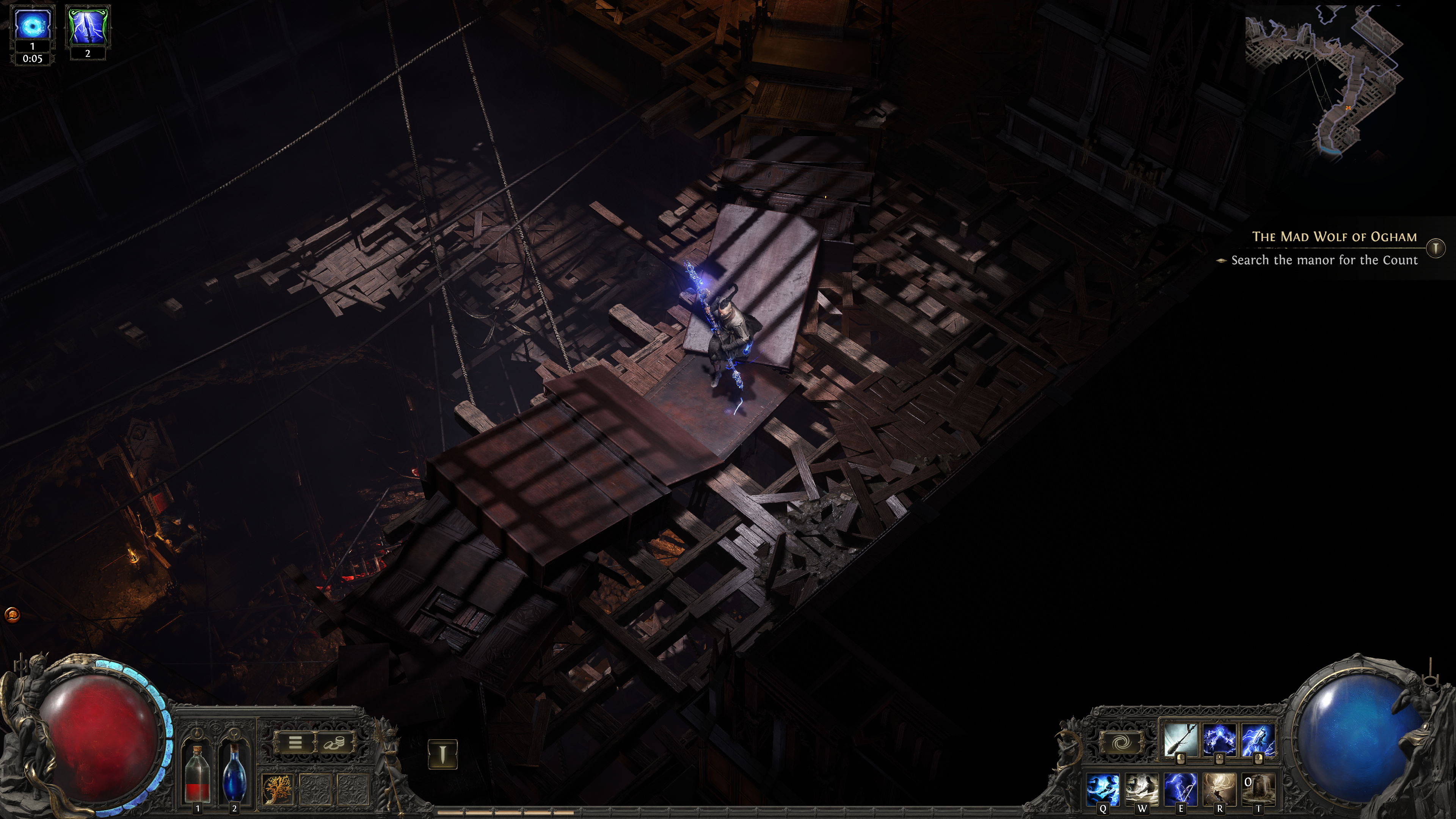
One important thing to remember: PoE2 is not remotely a soulslike. You lose nothing upon death in the regular mode, and the checkpointing system is very generous. Each map has a variety of checkpoints, and you’ll respawn at the closest one upon your demise. Critically, there’s always a checkpoint right next to bosses, so you’re never going to find yourself in a situation where you have to trudge through the horde to get back to the bastard who killed you.
If you’ve never played PoE, though, and if you’re already initiated in the mysteries of Dark Souls or Elden Ring, then I think you’ll find a lot to love about GGG’s impeccable ARPG. Certainly, the two developers seem to have a similar philosophy when it comes to boss encounters and builds, some of which was already present in the first game. It’s early days, of course, with PoE2 only just beginning its early access phase, but it might become your new obsession. It’s certainly mine.



